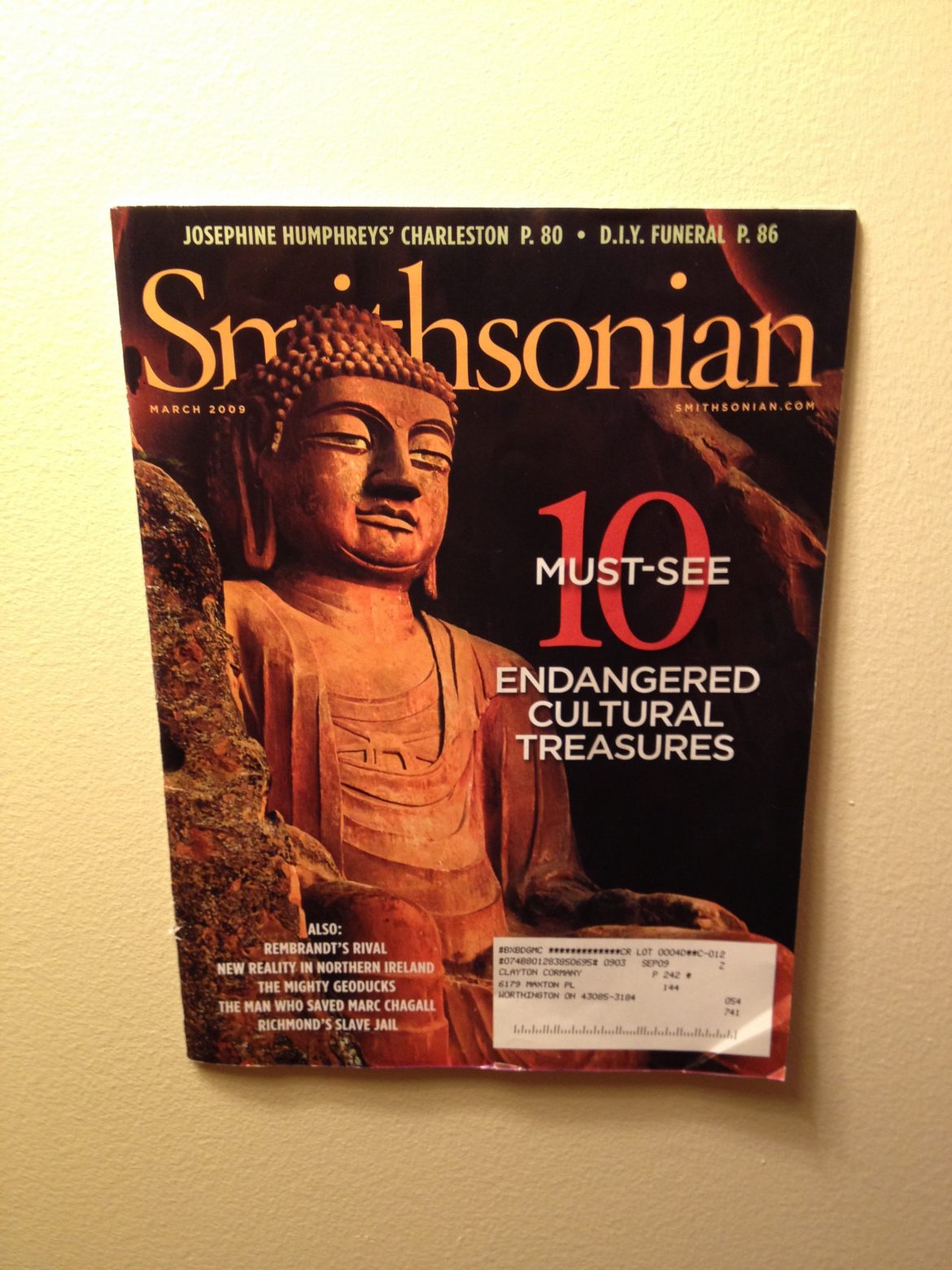
Smithsonian Magazine Helps Fulfill Quest for Lifelong Learning

Smithsonian Magazine Helps Fulfill Quest for Lifelong Learning
By: claycormany in Articles
During my days with the Ohio Department of Education, I often heard our leaders say that students should be “lifelong learners.” That meant giving students both the tools and motivation to seek knowledge and expand their horizons even after their formal schooling ended.
I like to think of myself as a lifelong learner. Until I participated in Professor Hermsen’s English course at Otterbein last winter (see May 15, 2016 post), I hadn’t been enrolled in a college course since 1978. But my learning certainly didn’t end in that year. There are numerous ways I have kept my mind open to learning as I have grown older. Memberships in the Ohio Historical Society and the Franklin Park Conservatory have helped. So has my habit of visiting the art museum of every major city to which I travel.
One of my biggest sources of knowledge doesn’t require me to go anywhere. All I need to do is open the pages of my Smithsonian magazine. Unlike a periodical that specializes in a specific discipline – like Psychology Today – the Smithsonian provides insightful articles on a wide variety of topics and issues: art, American history, natural history, archeology, science, current events, and photography to name a few. Interestingly, the magazine has few if any staff writers; most of their material comes from free-lancers. But these free-lance scribes all seem to have vast experience in researching and writing about their subjects.
Here some of the people and things that the Smithsonian has brought to my attention:
– Gobekli Tepe, a massive structure of carved stones found in Turkey. Predating Stonehenge by about 6,0000 years, the megaliths appear to be the world’s first temple.
– Jan Lievens, a gifted 17th-centruy Dutch artist, whose work has often been overshadowed by Rembrandt’s even though his creative talent was on par with that of his better-known friend and rival.
– Hiram Bingham IV, an official with the U.S.consul in Marseille during the early days of World War II. Bingham saved the lives of about 2,500 Jews by providing them with travel documents, enabling them to leave France before the Nazis forced them into concentration camps.
– William Thornton, designer of the U.S Capitol. An ancient Roman temple called the Pantheon provided Thornton with the inspiration for the building that houses Congress.
– The Hagia Sophia, a marvel of Byzantine architecture that has some of the world’s most-beautiful mosaics. The building has been a church, a mosque, and now a museum. Sadly, due in part to political issues, it is falling into disrepair.
Although most of the Smithsonian‘s articles deal with serious topics, the magazine usually closes out with a humorous piece. One essay focused on Amanda McKittrick Ros, widely regarded as the world’s worst author. How bad was she? Bad enough that Mark Twain once described her Irene Iddlesleigh as “one of the greatest unintentionally humorous novels of all time.”
To be honest, I don’t read the magazine cover-to-cover; some articles – like one on clam fishing in the Pacific Northwest – don’t pique my interest. But I read enough of them to keep my drive for lifelong learning on track. My subscription to the Smithsonian expired some time ago, so I’m letting my wife know that a renewal would be a welcome Christmas gift.
Tags: articles, learner, magazine, Smithsonian
